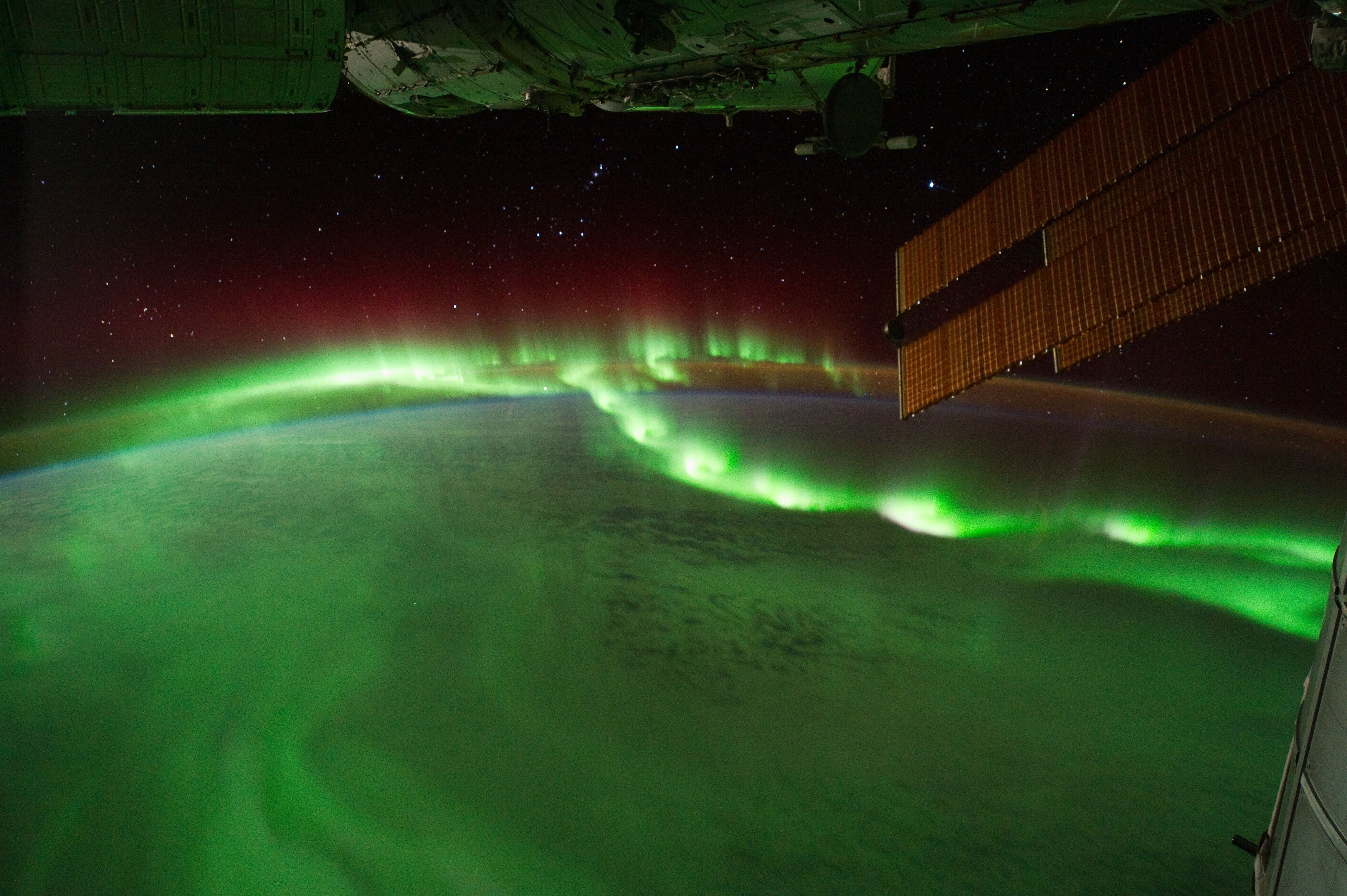Astronaut aboard space station shares video of stunning aurora borealis and Moonrise over Earth

European Space Agency (ESA) astronaut Samantha Cristoforetti has shared a video of stunning aurora borealis, also known as the northern lights, and Moonrise over the Earth.
The video, captured from the International Space Station (ISS), shows aurora borealis as it streams across the Earth's atmosphere. The captivating display of light occurs almost every night in the northern sky, from August to May.
The lights are the result of interactions between solar emissions and Earth's magnetic field. When charged particles streaming from the Sun (the solar wind) interact with Earth's magnetic field, they become trapped in the long tail of the magnetosphere. When magnetic reconnection occurs, the particles are accelerated toward Earth'poles. The particles collide with atoms of oxygen and nitrogen in the upper atmosphere. The atoms are excited by these collisions, and typically emit photons as a means of returning to their original energy state. These photons form the aurora that we see in the sky.
Auroras constantly change shape and intensity - from dim and scattered to bright enough to read by - providing a really spectacular view. Auroras also occur in the southern hemisphere. Auroras in the southern hemisphere are known as the southern lights or aurora australis.
Auroras are visible markers of space weather processes around Earth. Studying them gives scientists insight into how our planet's magnetosphere reacts to the space weather near Earth, which in turn can help them predict and mitigate its effects on communication signals and human technology.
Auroras are not just something that happen on Earth. They are also visible in other planets in our solar system including Jupiter and Saturn.
Sublime beauty! First, flying into a stunning aurora borealis. And then the Moon rise and the Moon glint on the surface of the planet….#MissionMinerva @esa @esaspaceflight @Space_Station pic.twitter.com/nkBvJrdsoE
— Samantha Cristoforetti (@AstroSamantha) September 6, 2022
… and in the meantime, looking aft, the aurora shimmers away beyond the horizon. And can you see the shadows cast by the Moon on the @Space_Station elements? #MissionMinerva @esa @esaspaceflight pic.twitter.com/c6Su4w6H8G
— Samantha Cristoforetti (@AstroSamantha) September 6, 2022
The video shared by the ESA astronaut on Twitter also shows the Moon glinting on the surface of our home planet.










